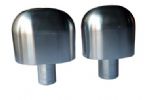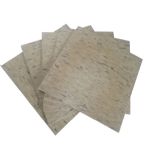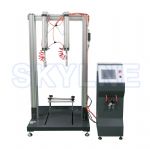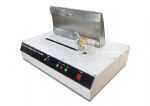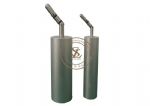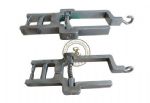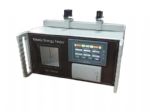- Product Catagory
- Tensile Strength Testing Machine
- Cables Flammability Testing Equipment
- Building Materials Flammability Testing Equipment
- Luggage Test Machine
- Textile Testing Equipment
- Color Fastness Instruments
- Textile Physical Test Instruments
- Lab Dyeing Instruments
- Flammability Test Chamber for Textile
- Consumables for Textile Testing
- Toys Safety Testing Equipment
- Physical & Mechanical Testing
- Flammability Testing
- Clamps for Toy Testing
- EN71-8,ISO8124-4
- Furniture Testing Machine
- Chair Testing Machine
- Mattress Testing Machine
- Furniture Testing Equipment
- Tables Test Machines
- Enviromental Chamber
- Leather and Footwear Testing Instruments
- Mobile Phone Testing Equipment
- Contact us
- Tel:86-769-23830463,86-13751491529
- Fax:86-769-38818154
- Contact:Ivy Xie
 [email protected]
[email protected] - Msn
 [email protected]
[email protected] Whatsapp/Wechat +8613751491529
Whatsapp/Wechat +8613751491529- Skype
 skylineinstruments
skylineinstruments happy_go_lucky4477
happy_go_lucky4477
- Site:Home > Toys Safety Testing Equipment > Physical & Mechanical Testing > SL-S67 EN71 Head Probe
- Product Images
- detailed description
-
Product descriptionThe aim of this tests is to assess whether or not the head of a child can fit through a fixed loop.CEN/TR 13387:2004 has been used as the source for the appropriate head dimension for children of less than 3 months
This probe is 96 mm in width, has two hemispherical ends with a radius of 48 mm and, as a consequence, a short flat side “e” which is 28 mm in length. The total perimeter of the probe is therefore 357 mm.
Since the limit of 380 mm, specified in EN 71-1 as the maximum perimeter of a noose, has been effective in preventing strangulation, the probe dimensions in Figure A.1 were changed to achieve the necessary values for the development of the test method for the perimeter of cords and chains. A probe with the followingdimensions was chosen to achieve a perimeter of approximately 380 mm:a: 96 mm;b: 136 mm;e: 40 mm.When the cord attachment points are close to one another, it is easy to insert this probe with its main axis (see Figure A.1) perpendicular to the toy. If the perimeter of the cord is greater than 380 mm the probe can be inserted.If the cord attachment points are further apart it is easier to insert the probe with its main axis parallel to the toy. In this case, to insert the probe, it is necessary for the distance between the toy and the cord to be at least 96 mm.The dimensions at which the insertion of the probe becomes possible with the probe main axis parallel to the toy are as follows:1) Perimeter of the probe: 380 mm;2) width of the probe: 96 mm.Therefore, if a rectangle with a perimeter of 380 mm and two sides of 96 mm is used, the other two sides shall be 94 mm long.
What is probe in mechanical engineering?
Abstract. Accessibility of measured points to touch probes is crucial in planning dimensional inspection of mechanical parts by Co-ordinate Measuring Machines (CMM). This paper presents a new method to define the kind of touch probe needed to measure the various points of a mechanical part.

- Related ProductsMore>>



